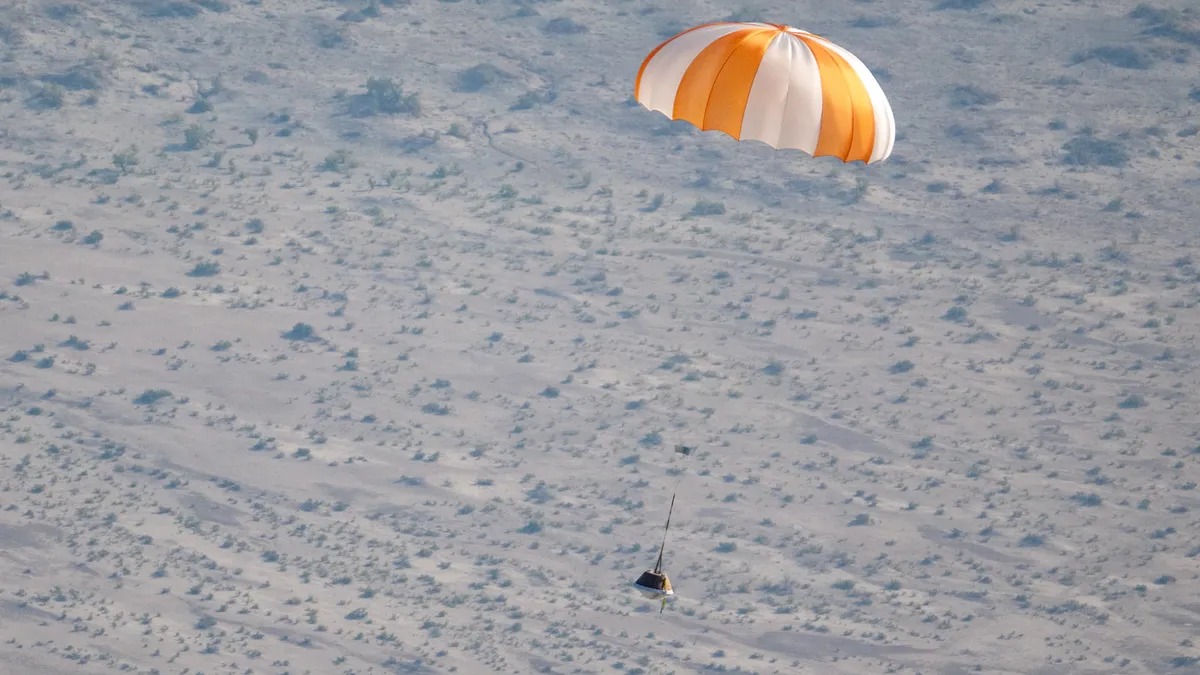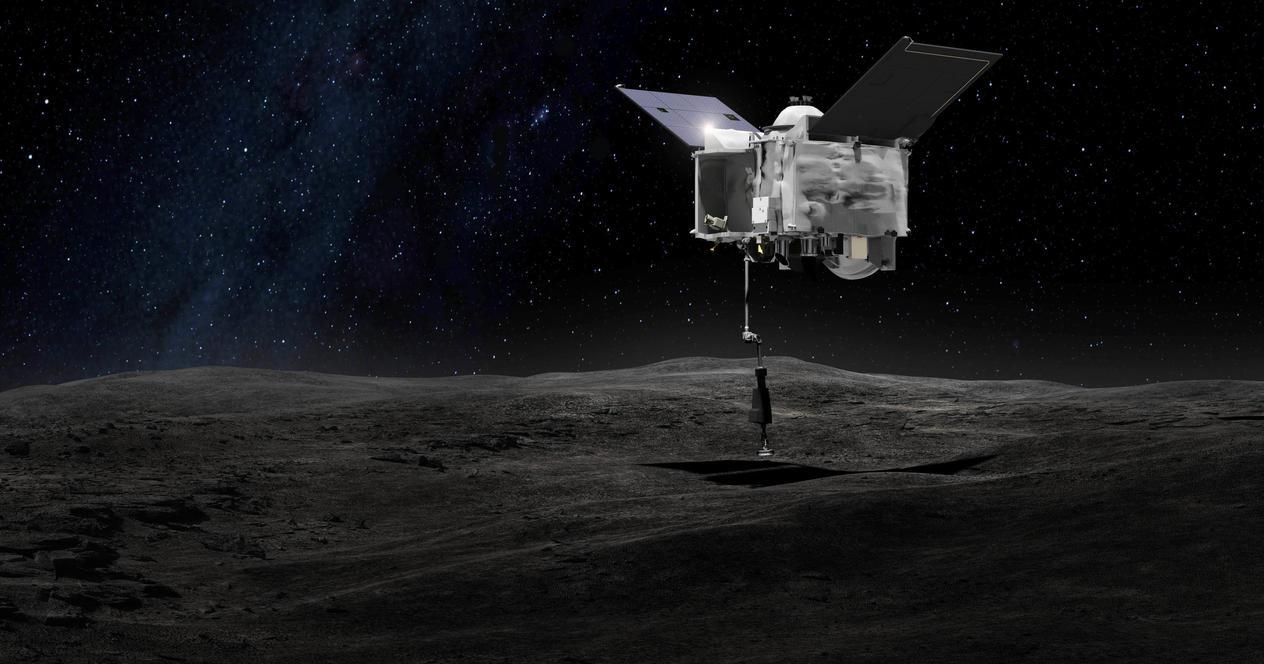After seven years of flying through space, the capsule of the OSIRIS-REx spacecraft, which contains a precious sample of the asteroid Bennu, is scheduled to land on Earth on September 24 with the help of parachutes. But what happens if an accident happens?

The accident of the OSIRIS-REx descent capsule is a “real horror and nightmare” for the mission’s principal investigator Dante Lauretta from the University of Arizona. “If that parachute doesn’t open and we’re in the ‘hard landing’ contingency, fortunately we have a backup team member who will help me with the emotional state and also, probably be the one I send out there to go deal with it,” Lauretta said during a press conference.
Successful sample collection
OSIRIS-REx made the first ever visit to the asteroid Bennu in 2020. In October of that year, the probe descended to collect samples, performing a maneuver that almost led to the spacecraft swallowing an extremely porous asteroid.

In the end, OSIRIS-REx successfully collected samples; it is now on the finish line to Earth. If everything goes according to plan, the return capsule will land gently on Sunday morning with the help of parachutes in the American desert of Utah.
Force majeure circumstances
But there are unexpected circumstances in life. Therefore, the sample recovery team is considering various scenarios to preserve the samples as much as possible in the event of a possible landing accident. The OSIRIS-REx team aims to get the maximum scientific information as part of this billion-dollar mission, regardless of which scenario will land on Sunday.
Lauretta said that in the event of an accident, the team would take the sample to a clean room, which he called a “safe environment” to avoid contamination. Emergency actions will also be provided there to quickly eliminate the consequences of the accident.
“We practice beforehand to optimize accuracy and minimize the chances of mistakes during the capsule’s Earth arrival. By simulating different scenarios, our team can anticipate challenges and work through contingency plans to effectively address them,” added Sandra Freund, head of the OSIRIS–REx program at Lockheed Martin Aerospace Company.
The faster, the better
Preparations for the recovery lasted several years and included a series of simulations in Utah, in the area where the spacecraft is supposed to land. In April, the training capsule was placed on the field in different positions so that the team could train in its search and lifting. They then used a truck in July and a helicopter in September to simulate dropping the capsule at high speed.
The sample extraction specialists had to quickly take the sample and deliver it to a local laboratory for further processing. “The faster the better,” wrote Richard Witherspoon, OSIRIS–REx project manager at Lockheed Martin.
Examples of failures and successes
Several other spacecraft have also returned asteroid samples to Earth over the years. NASA is studying the experience of other missions to improve its own procedures and planning.
It is known that the Genesis agency capsule of the Wild-2 mission crashed in 2004 because four switches were installed backwards in the atmospheric entry system. However, fortunately, the solar wind ions that it captured remained intact deep inside the capsule. Scientists were able to use this sample to uncover several interesting facts about the formation of planets — for example, thanks to the sample, the hypothesis was announced that the Earth lost part of its atmosphere at the beginning of its history.
Other robotic sample return missions over the decades include the Stardust mission, the Soviet Luna-24 mission and the Chinese Chang’e-5 lunar sample return mission, as well as the Hayabusa and Hayabusa-2 missions of the Japan Aerospace Exploration Agency.
Whatever form the descent capsule arrives in, researchers on Earth will be busy for decades studying OSIRIS-REx samples. Meanwhile, the original spacecraft will embark on a new mission. Its next task will be to explore another near-Earth asteroid, Apophis, in 2029 as part of an expanded mission known as OSIRIS-APEX.
Earlier we told 12 interesting facts about asteroids.
According to Space
Follow us on Twitter to get the most interesting space news in time
https://twitter.com/ust_magazine
